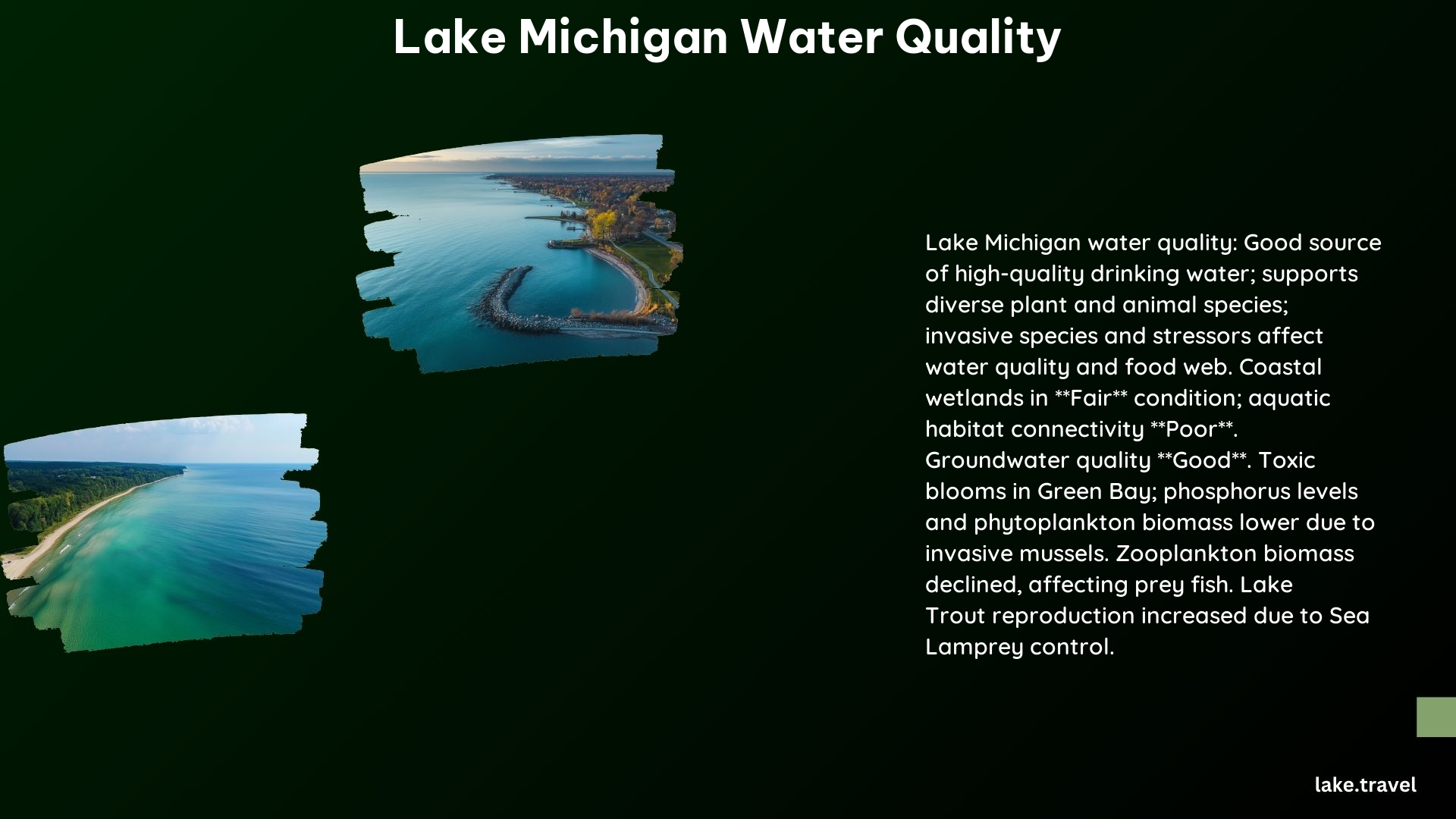Lake Michigan, the second-largest of the Great Lakes by volume, is a vital source of fresh water and a significant recreational and economic asset. The water quality of Lake Michigan has undergone significant changes over the years, with both improvements and ongoing challenges.
Current Water Quality Trends in Lake Michigan

Lake Michigan continues to provide good opportunities for swimming and recreation, and its waters are a good source of high-quality drinking water. Most toxic chemicals continue to decline in the environment, although restrictions on fish consumption are still advised in certain areas. However, invasive species, such as filter-feeding mussels, and other stressors continue to affect both water quality and the lake’s food web. Additionally, excessive growth of nuisance algae like Cladophora and toxic blooms of cyanobacteria occur in some areas, particularly in Green Bay. Groundwater quality is assessed as Good based on nitrate and chloride concentrations.
Improvements in Water Quality Since the 1970s

Long-term trends show considerable improvement in lake water quality since 1970, with the city of Chicago conducting lake survey monitoring programs since the 1930s. The Illinois EPA launched a redesigned Lake Michigan Monitoring Program (LMMP) in 2010 to better assess the quality and condition of Lake Michigan in a more thorough and timely manner.
Sources of Water Quality Information for Lake Michigan
The Illinois Environmental Protection Agency (IEPA) conducts monitoring programs and provides data on the condition of Lake Michigan, including the Lake Michigan Monitoring Program (LMMP). The United States Geological Survey (USGS) provides real-time water quality data for various sites around Lake Michigan, including parameters like temperature, pH, and dissolved oxygen levels. The Michigan Department of Environment, Great Lakes & Energy (DEGLE) also reports on water quality issues, including combined sewer overflows and their impact on Lake Michigan.
Ongoing Challenges
Despite the improvements, there are still ongoing challenges to the water quality of Lake Michigan. Michigan still has outdated combined sewer systems that can lead to the discharge of raw sewage into local waters during rainfall events, contributing to water pollution. Additionally, microplastic pollution from synthetic fibers is a growing concern, and efforts are being made to reduce this pollution.
Conclusion
Lake Michigan’s water quality has seen significant improvements over the years, but there are still ongoing challenges that need to be addressed. Continued monitoring, investment in infrastructure, and efforts to reduce pollution and invasive species will be crucial in maintaining the lake’s water quality and preserving its recreational and environmental value.
References:
– Michigan.gov. (n.d.). Inland Lakes Monitoring – State of Michigan. Retrieved from https://www.michigan.gov/egle/about/organization/water-resources/inland-lakes-monitoring
– USGS. (n.d.). Current Conditions for Michigan: Water Quality. Retrieved from https://waterdata.usgs.gov/mi/nwis/current/?type=quality
– MI Water Stewardship. (n.d.). Michigan Water Quality Issues. Retrieved from https://miwaterstewardship.org/michigan-water-issues/
– Illinois EPA. (n.d.). Lake Michigan. Retrieved from https://epa.illinois.gov/topics/water-quality/monitoring/lake-michigan.html
– State of the Great Lakes. (n.d.). Lake Michigan. Retrieved from https://stateofgreatlakes.net/lake-assessments/lake-michigan/.
